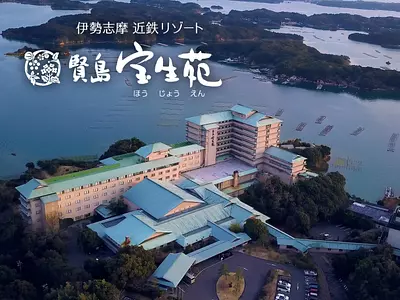A work stay where you can stay while experiencing nature and culture in Yoshino-Kumano National Park! Refresh your mind and body in a natural environment♪
掲載日:2021.12.17
Introducing a model course that covers the Kumano Sea and Kumano River basin within the Yoshino-Kumano National Park area! Enjoy the local atmosphere by walking around town, experiencing nature and culture, and interacting with the locals ♪ This is a 1 night 2 day work stay plan that will refresh your body and mind ♪
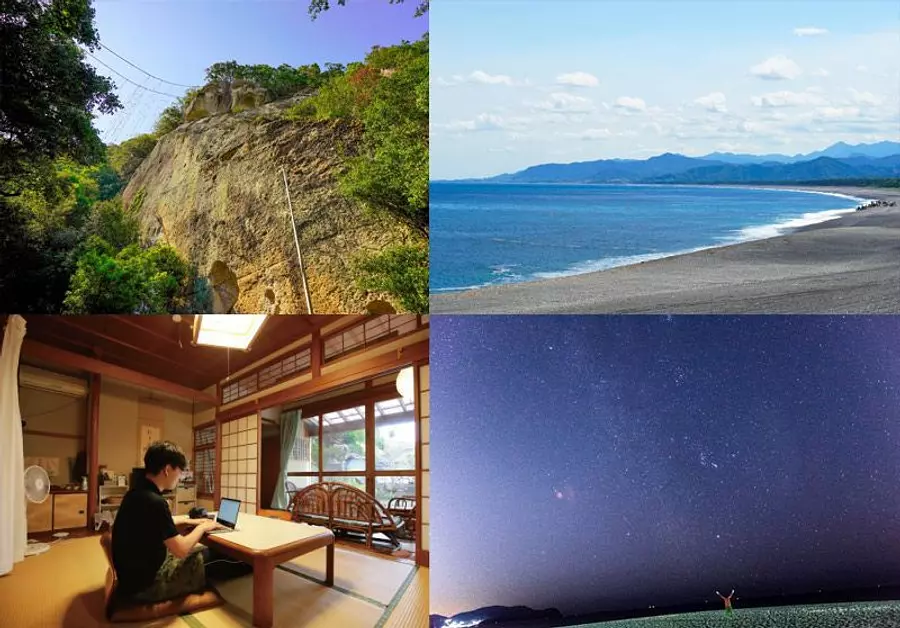
What is Yoshino-Kumano National Park?
Yoshino-Kumano National Park occupies a large area in southern Mie Prefecture.
It is an area where you can enjoy a rich variety of nature and scenery, with mountain ranges running from the north to the southwest, the Kitayama River and Kumano River in the south, and the Kumano Sea in the east. Osugidani, located in the northern mountainous area, is considered one of Japan's three major canyons and is also registered as a UNESCO Eco Park. In addition, the Kumano Kodo ``Iseji'' within the park is one of the world's most famous ``roads'' and is a World Heritage Site. Among them, the Kumano River in the south is known as the ``river pilgrimage route.'' We recommend ways to enjoy this area that remind you of the travelers who once traveled this path.
Doro-kyoGorge, which has huge rocks, strangely shaped rocks, and cliffs, is also a popular kachiji and activity spot. Furthermore, the Kumano Sea coastline is also not to be missed. In addition to Tategasaki, which has a towering cliff, Shichirimihama Beach, which stretches far and wide, is full of photogenic spots.
It is an area where you can not only enjoy the scenery created by nature, but also the history surrounding it.
This place, where deep nature and history are intertwined, has a charm that makes you want to visit again and again.
Explanation of the areas covered in this course
Shown on the map are the spots you will visit on this course. (Total 10 locations)
This time, we will be staying in KumanoCity, MihamaTown, and KihoTown, which are located in the Kumanonada Sea and Kumano River Basin, where we will have a workday where we will walk around town, experience nature and culture, interact with local people, and enjoy local experiences unique to this area. This is a model course where you can enjoy the atmosphere.
Model course on the first day
- Gather local information at “Kumano Kodo Omotenashikan”! Let's enjoy the special product tangerine juice♪
- For lunch, enjoy the famous tuna bowl at "Hana no Iwayatei"♪ You will be impressed by the deliciousness of Kumano tuna!
- Visit Japan's oldest shrine, Hananoiwaya-jinjaShrine. Experience the mysterious atmosphere firsthand!
- Enjoy the signature menu item “Nihime soft serve ice cream” at Michi-no-eki “Kumano Hana-no-Iwaya ”♪
- Visit a former Meiji merchant house with the "Oku-Kumano Kimoto One Coin Guide". Learn about the history and culture of the area.
- We stayed at Wagaranya Umi, a guest house that was renovated from an old folk house. Since the entire building is rented out, you can also work at your desk!
- Take a walk along Shichirigahama Beach to take a break from work. Relax and feel refreshed by the sound of waves ♪
Model course on the second day
- Morning fishing challenge at ShichiriMihamaBeach! Let's blend into life with the sea ♪
- Learn about Kumano's culture through a dyeing experience at "Dyeing Studio Nunoya Kumano"!
- Spend a relaxing time interacting with cute sheep at the "Sheep Mikan Farm" ♪
- Interact with sea turtles at Kihocho KihochoUmigamePark, a Michi-no-eki!
The sites visited on this course are concentrated around KumanoCity, so you can explore them on foot or by bicycle. The article also introduces locations where you can rent electrically assisted bicycles, so be sure to check it out!
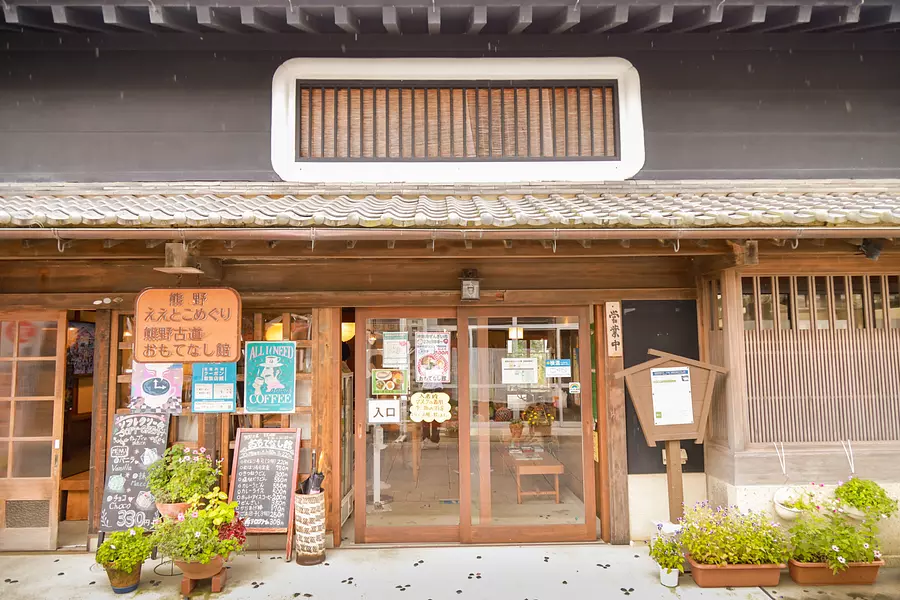
Gather local information at “Kumano Kodo Omotenashikan”! Let's enjoy the special product tangerine juice♪
Kumano Kodo Omotenashikan is a tourist information center located in a renovated 130-year-old traditional house.
Inside the facility, we sell specialty products, take-out snacks, and distribute tourist pamphlets on Kumano Kodo and other areas.
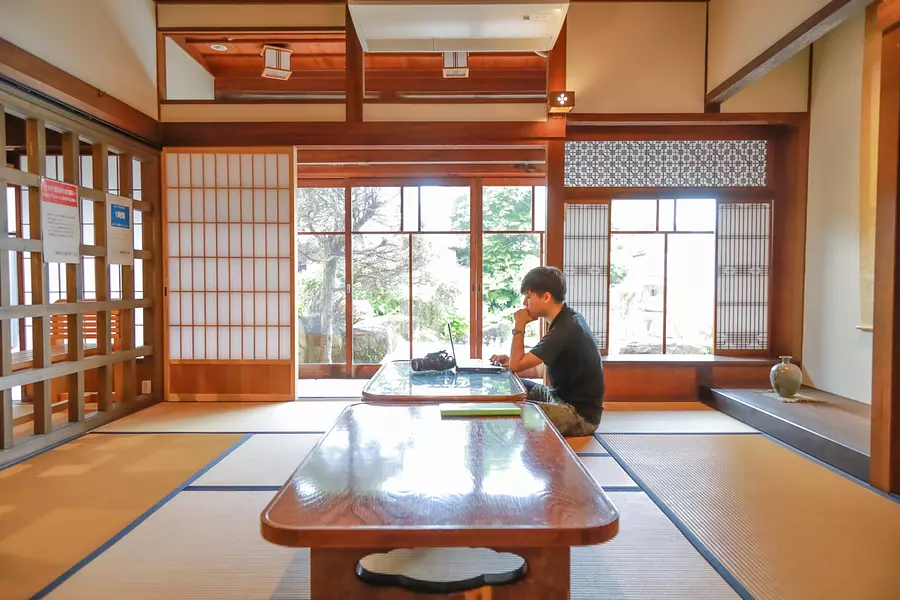
There is also a quaint rest room in the building that is equipped with Wi-Fi, so you can think about your plans for the day or do some light work such as checking your morning email.
Once you've settled in, let's head over to the special product sales corner!
*Please limit the use of the break room to one hour.
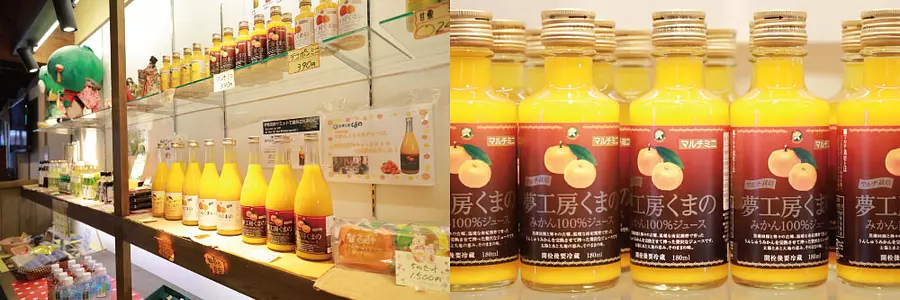
In this area, mandarin oranges can be harvested all year round, so you can always buy special products made with mandarin oranges. You will be overwhelmed by the sight of so many types of mandarin juice lined up side by side!
When I asked him about his recommended product, he told me about this ``Yume Kobo Kuma no Mikan Juice''. This product was offered at the 2016 IseShimaSummit, and because it uses multi-cultivated mandarin oranges, it has a very high sugar content and a fresh taste.
The delicious juice will make you feel refreshed in the morning♪
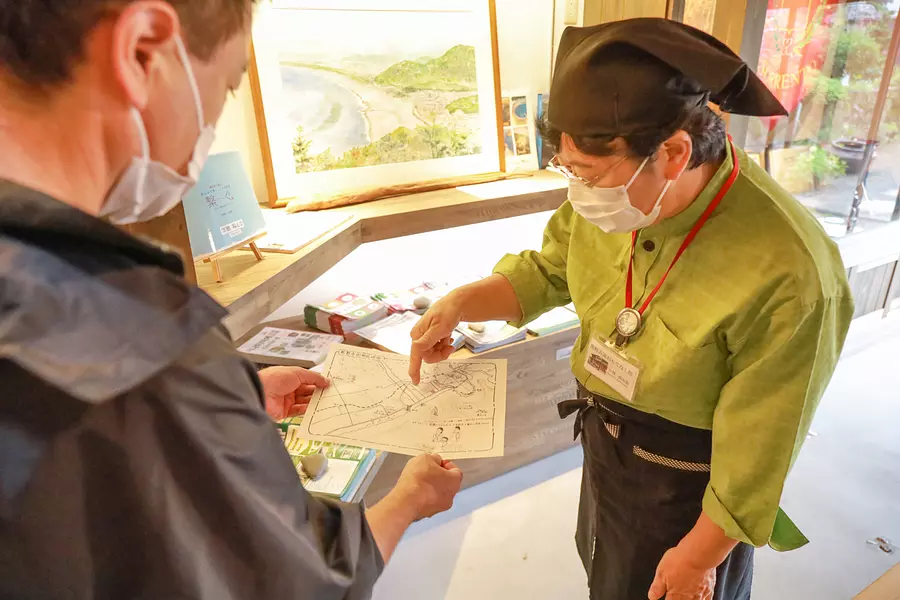
I took the opportunity to ask about recommended spots around here.
About 2km away from here is Hananoiwaya-jinjaShrine, which is said to be the oldest shrine in Japan, and it turns out that there is also a restaurant nearby called Hana no Iwayatei where you can eat delicious tuna bowls. !
Now that you have experienced the "hospitality" of this place from the beginning and obtained great information, let's head to the next destination♪
*Electric assisted bicycles are available for rent at the Kumano Kodo Hospitality Center. If you want to tour this course by bicycle, we recommend renting one here. For details, please see this page of KumanoCity Tourism Organization.
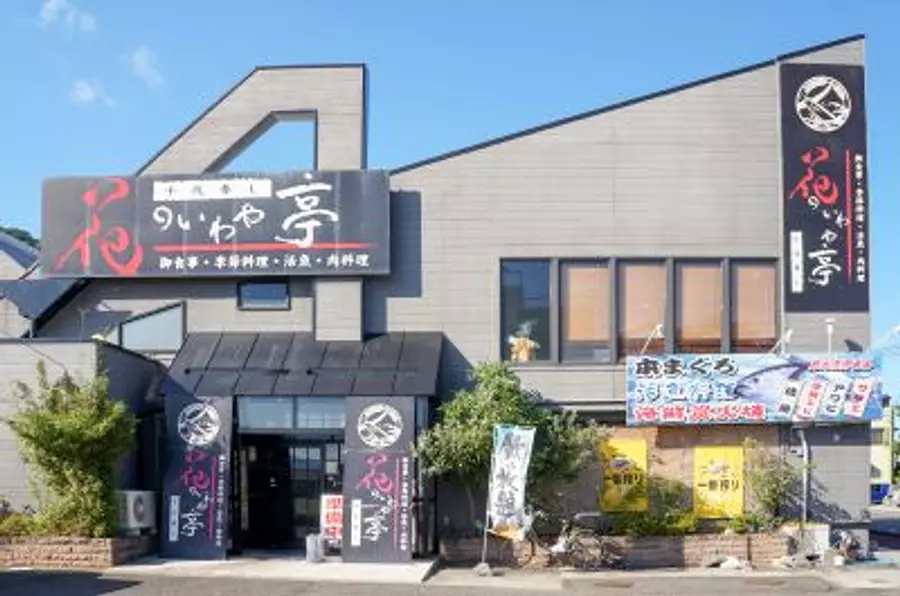
For lunch, enjoy the famous tuna bowl at "Hana no Iwayatei"♪ You will be impressed by the deliciousness of Kumano tuna!
Hanano Iwayatei is a restaurant where you can enjoy dishes made with locally produced fresh fish, vegetables, and meat in a variety of ways, including set meals, sushi, and rice bowls. It's a very popular restaurant with locals, and there can sometimes be a line during lunch hours!
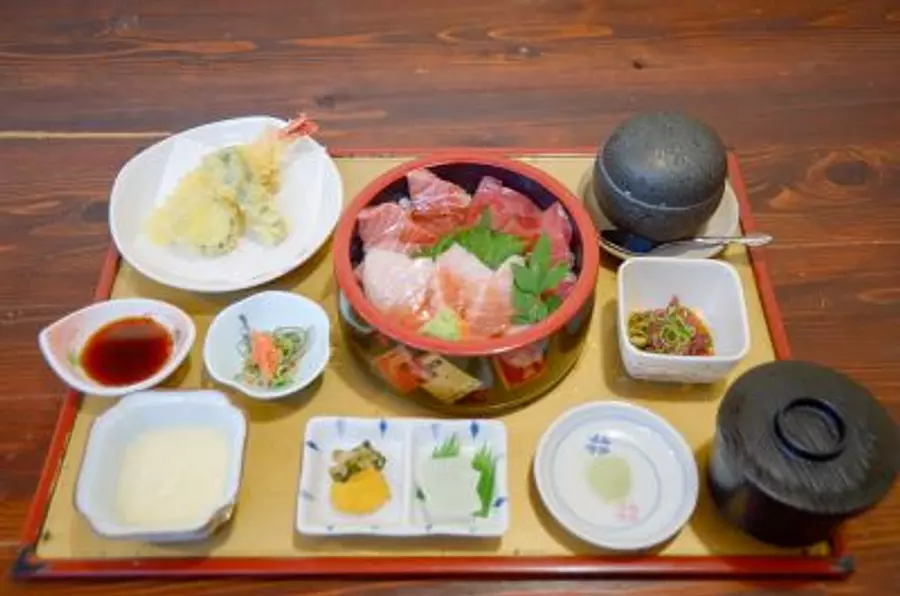
This time, I ordered the "Bluefin Tuna Bowl Set" which uses bluefin tuna from Kumano. The bowl is generously filled with lean and medium-fatty meat, and the fillets are large in size, making it extremely filling!
I was very satisfied with the crispy tempura and melt-in-the-mouth delicious tuna bowl.
It's about 300 meters from here to Hananoiwaya-jinjaShrine, so let's walk until we're full!
(If you are coming by car, please park at Michi-no-eki "Kumano Hana-no-Iwaya".)
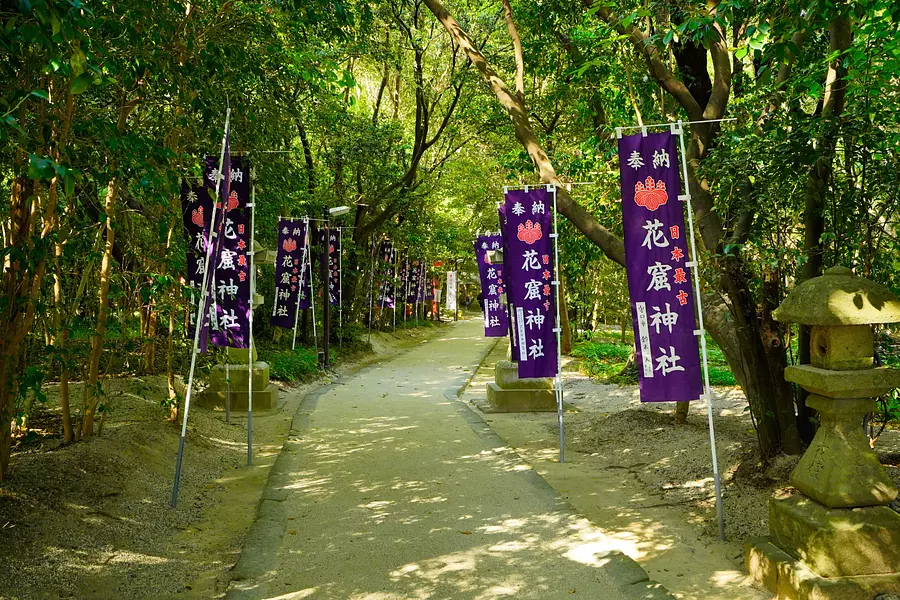
Visit Japan's oldest shrine, Hananoiwaya-jinjaShrine. Experience the mysterious atmosphere firsthand!
Hananoiwaya-jinjaShrine, said to be Japan's oldest shrine, is where Izanami no Mikoto, the mother of the gods, gave birth to the fire god Kagutsuchi no Mikoto, was burned to death, and was buried. This is the mausoleum.
Due to such anecdotes, this place is strongly believed to be a place that touches the land of hell, and has become famous as a power spot that is visited by many worshipers from all over the country.
The mysterious approach path surrounded by trees has a solemn atmosphere worthy of being called a power spot.
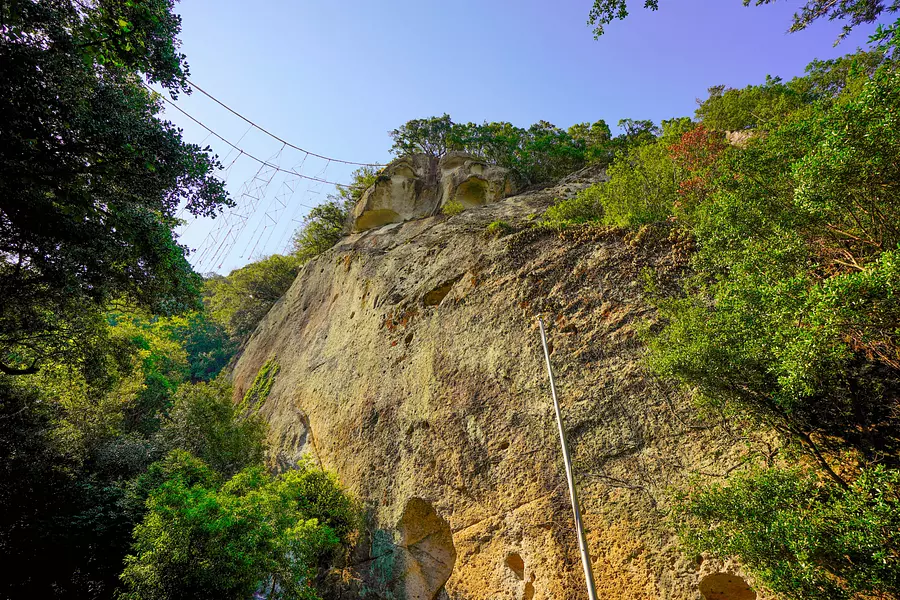
After walking a short distance and passing the shrine office called Sanroden, there was a huge rock sitting in front of me. Hananoiwaya-jinjaShrine does not have a shrine, but instead this large rock is considered the object of worship, and Izanami no Mikoto is enshrined here.
When you stand in front of the deity, you will be able to get a glimpse of why ``nature worship'' has developed in various parts of the world. We would like you to experience this spiritual space on-site.
Incidentally, in 2004, the ``Sacred Sites and Pilgrimage Routes of the Kii Mountains'' were registered as a World Heritage Site, and Hananoiwaya-jinjaShrine is one of them. In other words, it is a shrine that is also a world heritage site!
After enjoying the extraordinary space, let's go back to Michi-no-eki "Kumano Hana-no-Iwaya" and have dessert time ♪
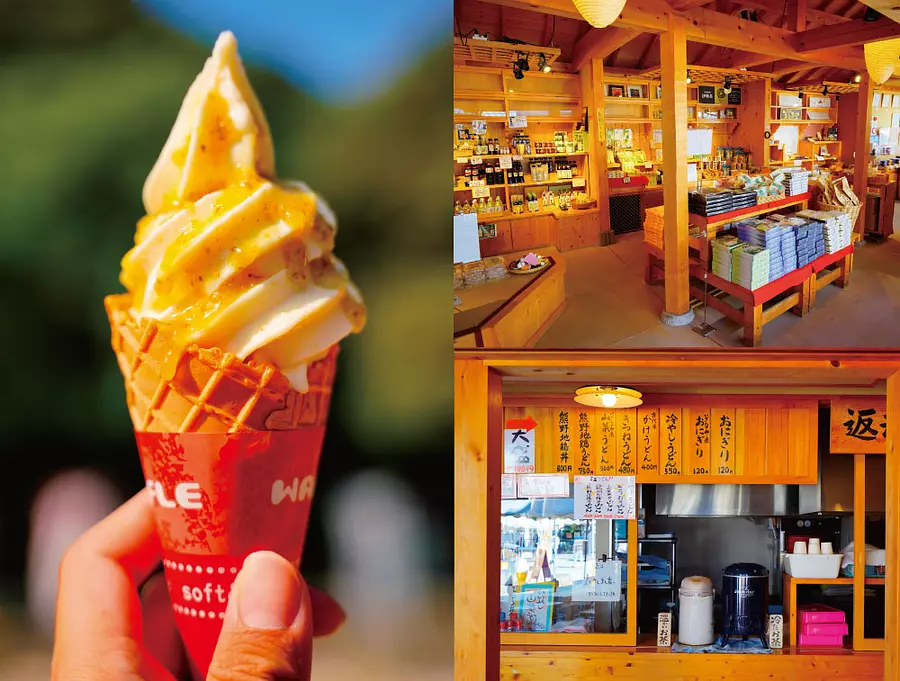
Enjoy the signature menu item “Nihime soft serve ice cream” at Michi-no-eki “Kumano Hana-no-Iwaya ”♪
Michi-no-eki ``Kumano Hana-no-Iwaya'' has ``Otsuna Chaya,'' which serves as a place to eat, drink, rest, sell local products, and provide tourist information and information.
Here, we ordered the signature menu item ``Nihime Soft''!
Niihime is a new type of citrus fruit discovered here in Kumano, and is characterized by its sweet and sour taste.
The base is Mie's representative local milk "ouchiyama Milk" and Niihime's sweet and sour nectar is drizzled over it, and the rich vanilla and Niihime's sweet and sourness go perfectly together♪
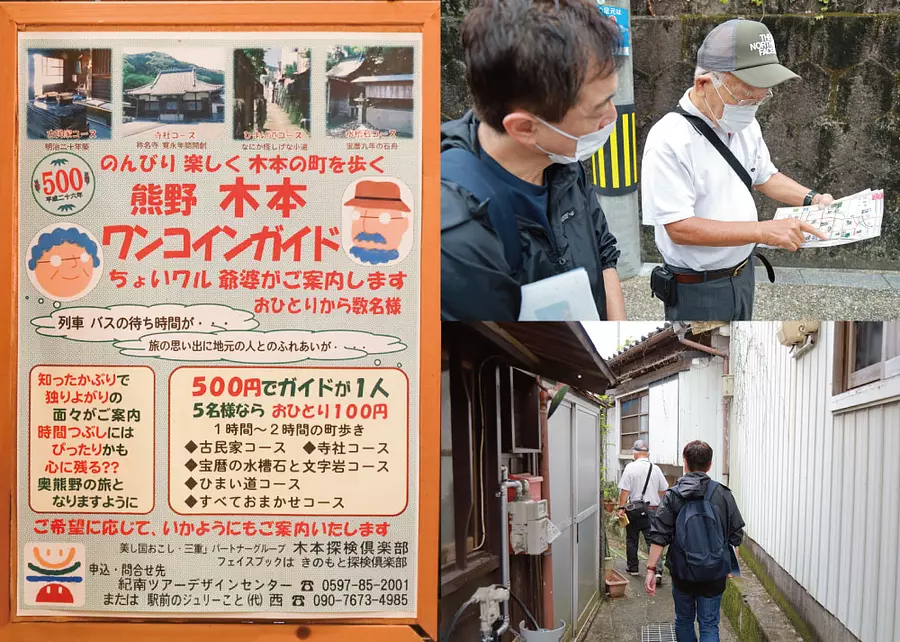
Visit a former Meiji merchant house with the "Oku-Kumano Kimoto One Coin Guide". Learn about the history and culture of the area.
"Oku-Kumano Kimoto One Coin Guide" is a guided tour that will take you around Kimoto-cho, Kumano KumanoCity for just one coin (500 yen). The reception was held at the "Kinan Tour Design Center" as it is a perfect place to learn about the local history and culture unique to this region!
The guide time is about 1 to 2 hours, but you can adjust it according to your wishes, so it's a good way to make effective use of the time waiting for trains or buses.
On this day, we were guided around the historic road leading to the sea and the former Meiji merchant house "Fukushima House."
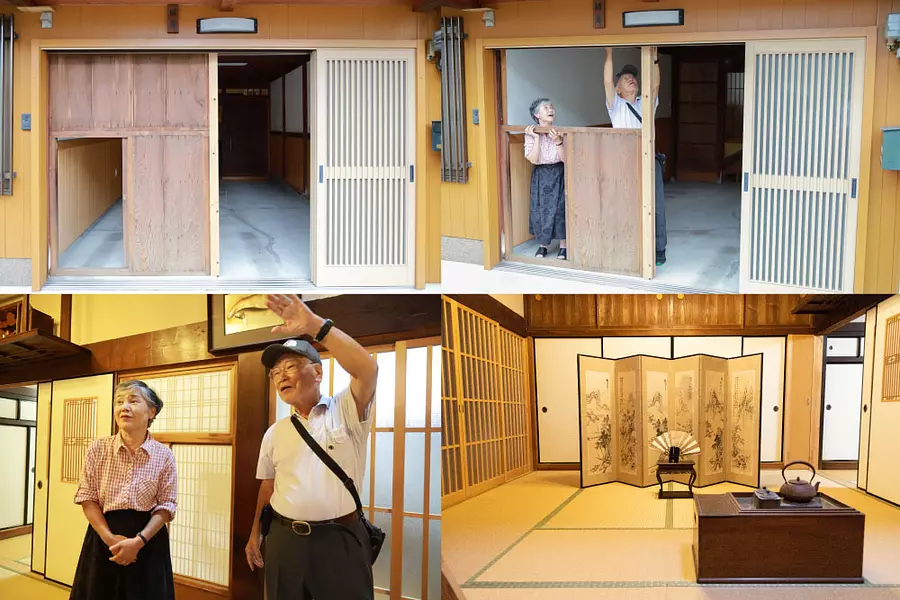
``In the past, houses in this area had trap doors, but these have disappeared over time.''
That's what the manager of Fukushima-taku, a former Meiji merchant house preserved in modern times, says. A trapdoor is a door that functions as what we would now call a shutter or storm door, and it played this role by firmly fitting boards into the grooves on the top, bottom, left and right of the entrance as needed.
On the way, an old lady who passed by also joined in the conversation, and we started talking about various things about this town. Being able to have casual conversations like this with local people is a unique experience in the countryside...♪
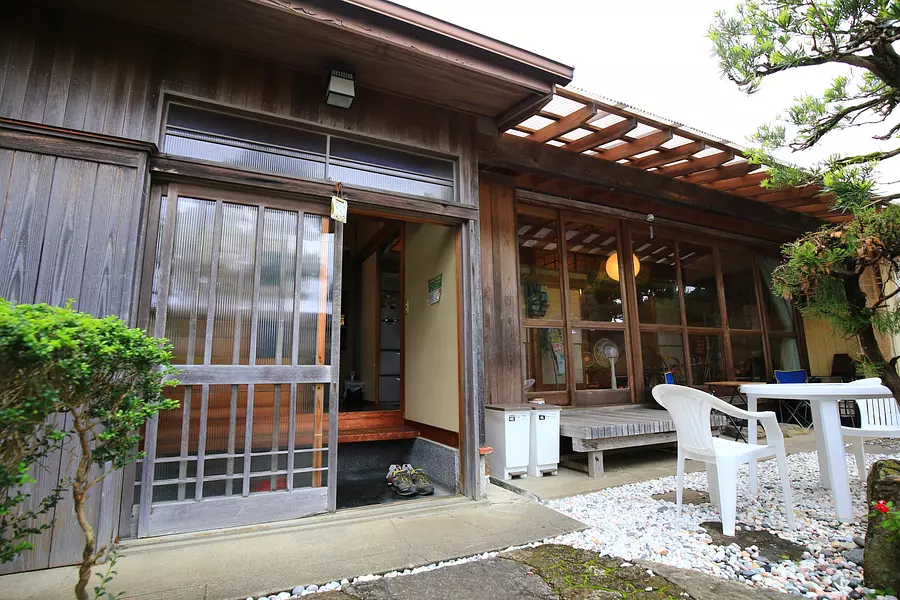
We stayed at Wagaranya Umi, a guest house that was renovated from an old folk house. Since the entire building is rented out, you can also work at your desk!
Today's accommodation is ``Wagaran-ya Umi,'' a guest house that is a renovated old private house located very close to ``Fukushima-taku.''
Since the guest house is rented as a whole, you can concentrate on your work without worrying about the sights or sounds of those around you, making it suitable for long-term work stays. Of course, Wi-Fi is also available♪
The garden is large and you can have a BBQ, so it's an inn where you can truly feel like you're living in the area.
In the past, some people have even spent their work stay here for several months!
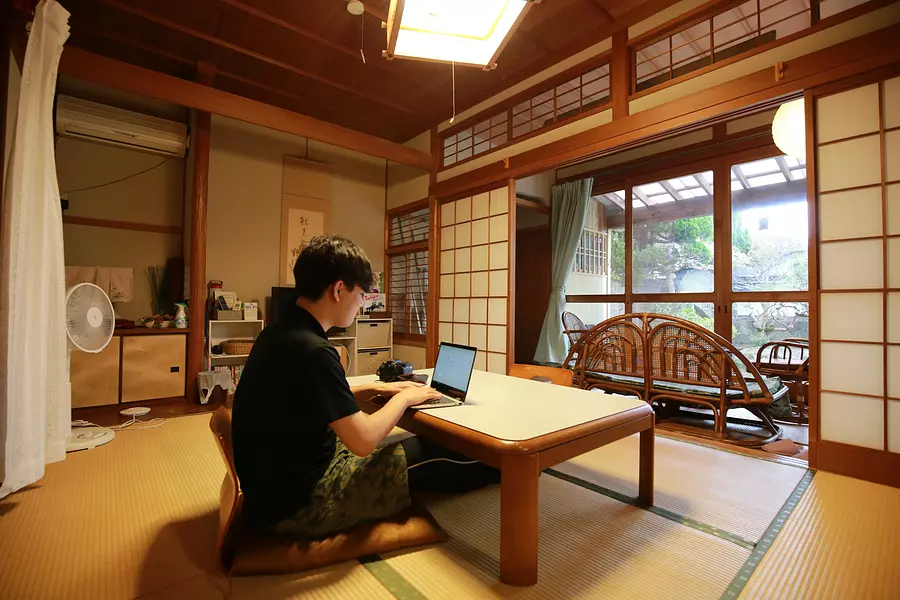
The room is a Japanese-style room filled with the warmth of wood, making you feel calm!
The environment was quiet, so I was able to concentrate on today's work.
Now that you've settled down, why not take a refreshing walk to the nearby beach?
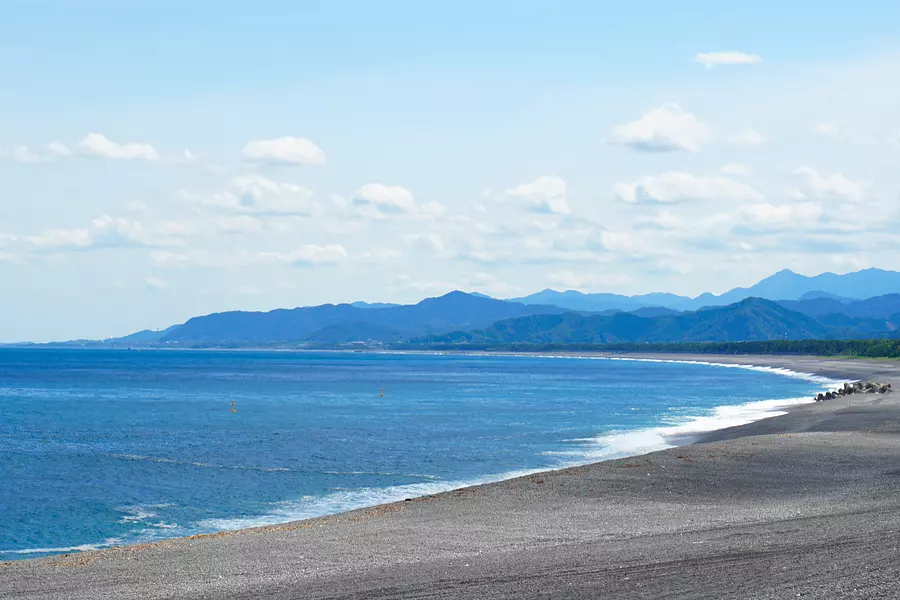
Take a walk along ShichiriMihamaBeach to take a break from work. Relax and feel refreshed by the sound of waves ♪
Just a 2-minute walk from Wagaran House is ShichiriMihamaBeach, the longest gravel beach in Japan!
The scale of the ``nearby coast'' is the largest in Japan, isn't it?
*A gravel beach is a coast covered with pebbles.
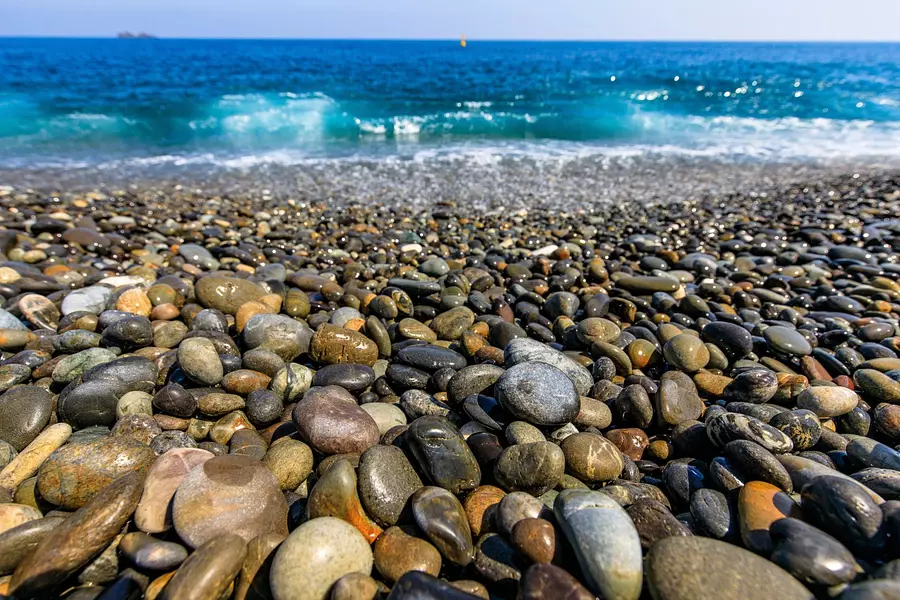
As I approached the beach, I heard the sound of something scraping.
Its true identity is the sound of countless pebbles rubbing together due to waves! The stones that have been rubbed by the waves and have their corners removed are called ``Mihama Koishi,'' and are also used as high-quality garden stones and interior pebbles.
I felt nostalgic and lost track of time as I listened to the soothing melodies of nature.
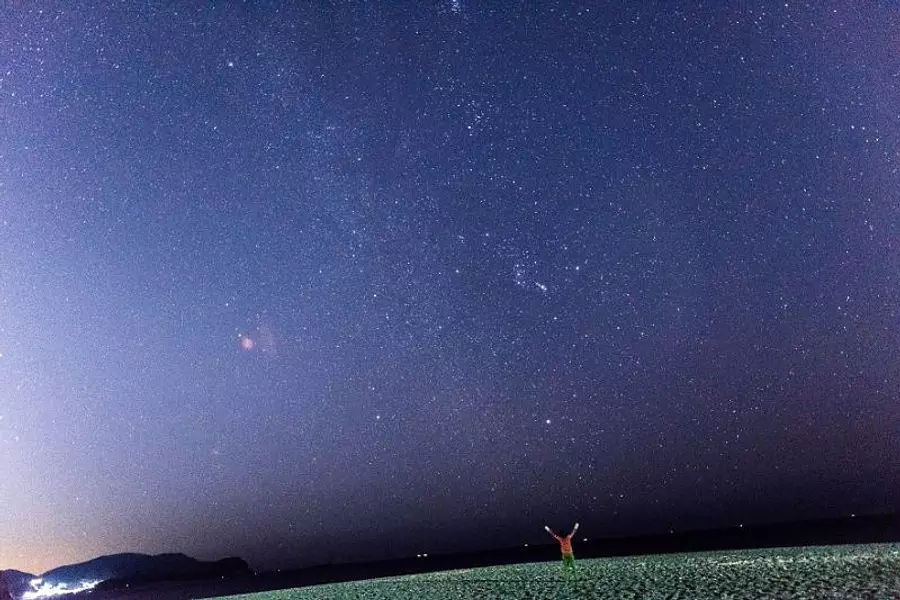
At night, you can even see a starry sky! There are few city lights in this area, making it perfect for stargazing.
Refresh your mind and body in the nature of Kumano. I'll work even harder at work!
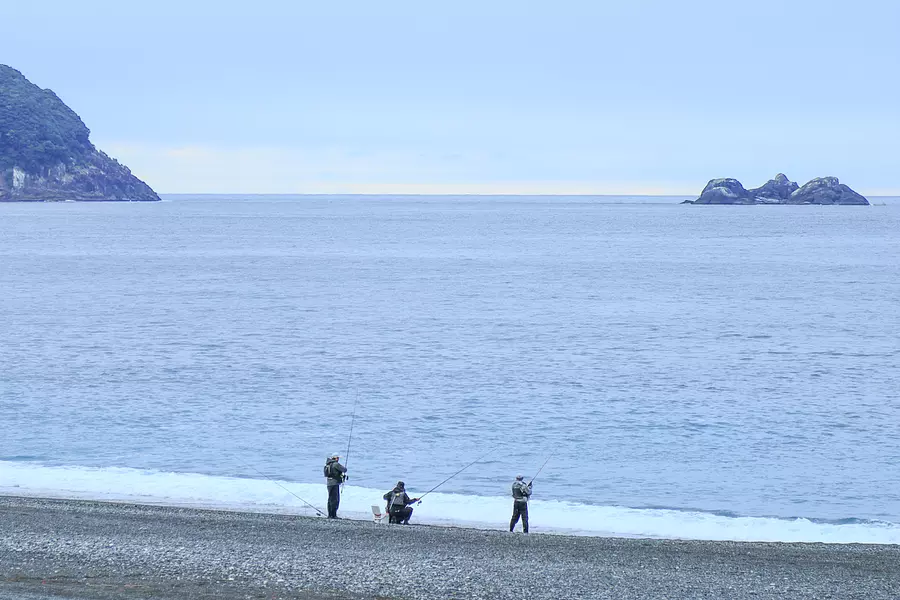
Morning fishing challenge at ShichiriMihamaBeach! Let's blend into life with the sea ♪
The next morning, as I was walking along ShichiriMihamaBeach, I saw that it was crowded with anglers.
There are many fishing tackle shops along the coast, so why not rent a fishing rod and try your hand at fishing in the morning?
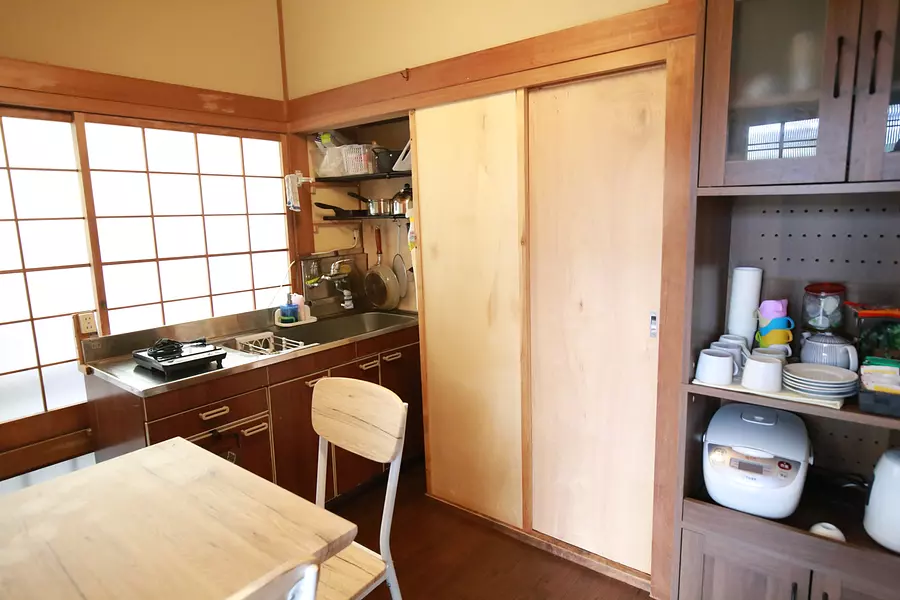
It's also a good idea to prepare the fish you catch right away in your kitchen and have it for breakfast!
A complete set of cooking utensils is provided, and guests are free to use them.
Workation while enjoying life close to the sea. I was able to fully enjoy the freshness of working in a different place than usual!
After breakfast with freshly caught fish, it's time to do some more work until check-out time.
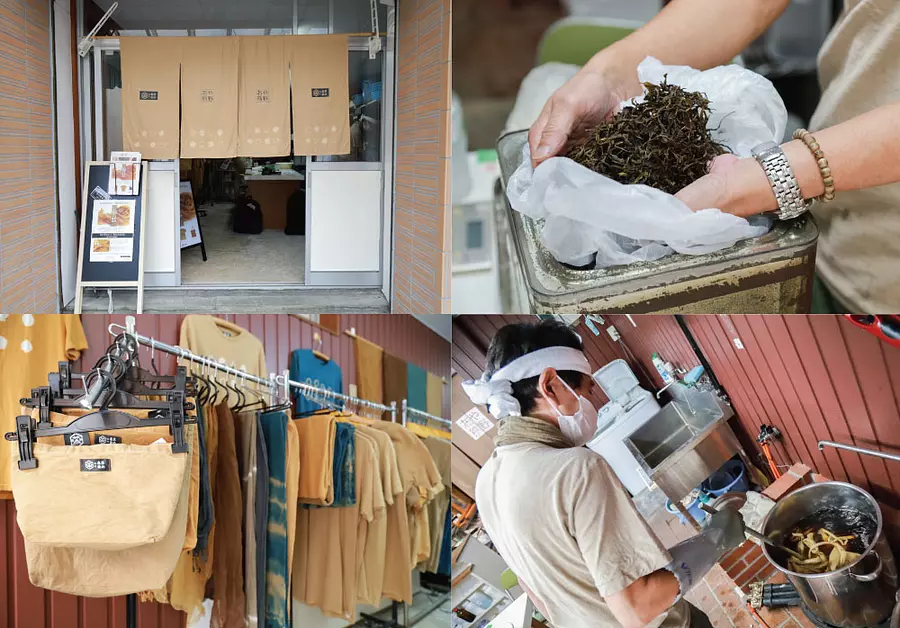
Learn about Kumano's culture through a dyeing experience at "Dyeing Studio Nunoya Kumano"!
``Dye Studio Nunoya Kumano'' is a spot where you can try ``Kumano Bancha Dye'', a dyeing experience using bancha. You can dye a variety of goods such as plain T-shirts, stoles, and tote bags in deep bancha shades.
``In the Kumano region, there has been a tradition of planting tea trees and making bancha in each household since ancient times.''
The dyeing experience begins while hearing from the owner about the close relationship and history of this area and bancha!
*You can bring your own items to dye as long as they weigh less than 500g! Basic items such as T-shirts can be purchased at the store, so you can choose your favorite items and create your own original goods.
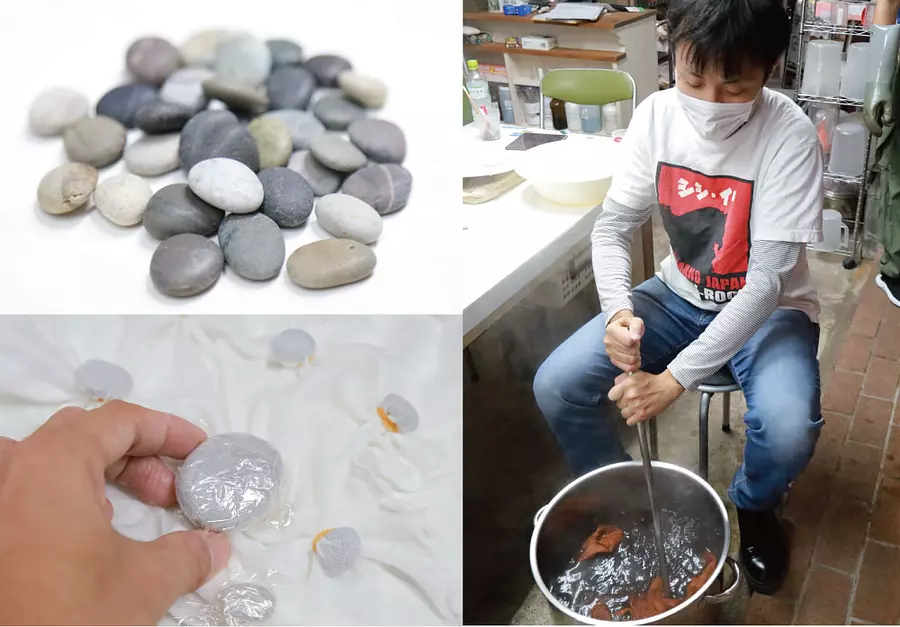
Pebbles from ShichiriMihamaBeach are tied with rubber to make patterns, and then soaked in bancha to give it color.
You have to stir the sundou while it simmers for several minutes until it takes on color, but you can enjoy the fragrant aroma of bancha up close, which is very soothing.
In the past, each household in this area had a large horoku, and there was also a culture of roasting bancha to enjoy its fragrant aroma.
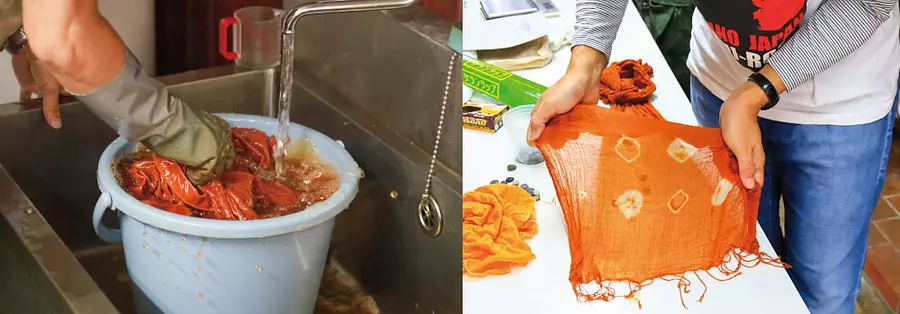
When the dyed cloth was rinsed under running water, it was finished in a natural and gentle tea color. The patterns and shapes of the molded pebbles stand out beautifully.
The finished dyed items are perfect as souvenirs from your trip♪ It was an experience where you could experience the culture that is rooted in this area.
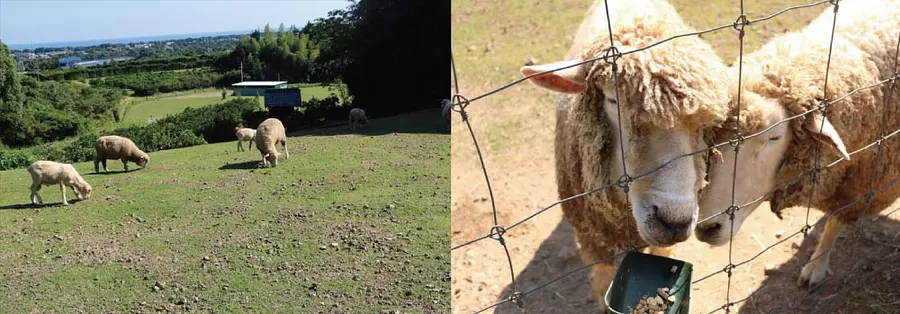
Spend a relaxing time interacting with cute sheep at the "Sheep Mikan Farm" ♪
"Sheep Mikan Farm" is a farm located in MihamaTown town where you can grow mandarin oranges all year round. Located on a hill overlooking the Kumano Sea, you can enjoy the famous mandarin orange juice while interacting with cute sheep.
First, try feeding the sheep! "Sheep snacks" are sold at the farm for 100 yen, and you can feed them to the sheep by putting them in a shovel.
A lot of people come by, so the cute sight will soothe you♪
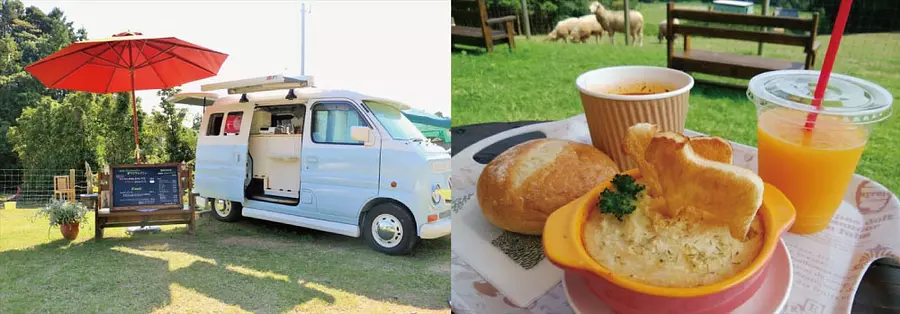
There is also a kitchen car on the farm where you can order drinks and snacks.
For lunch, how about ``Shepherd's Pie'', a British home-cooked dish of minced meat topped with mashed potatoes?
There are also set menus that include soup, bread, and drinks!
I was able to refresh myself in a comfortable place where I could spend a relaxing time♪
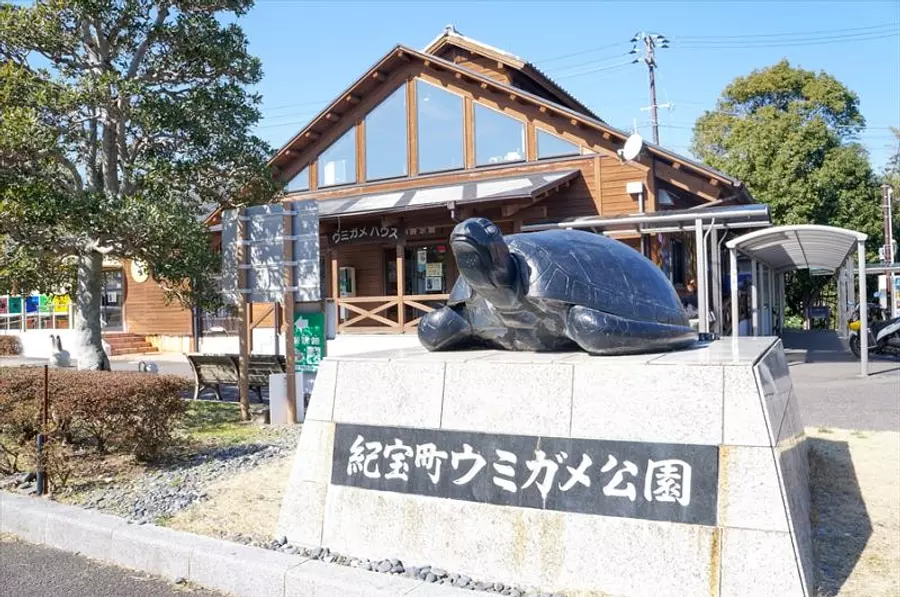
Interact with sea turtles at Kihocho KihochoUmigamePark, a Michi-no-eki!
"Michi-no-eki KihochoUmigamePark" in KihoTown is a rare Michi-no-eki with the only sea turtle aquarium in the country.
It not only functions as Michi-no-eki, but also serves as a base for sea turtle protection and awareness campaigns, protecting the sea turtles that come to the coast to lay eggs.
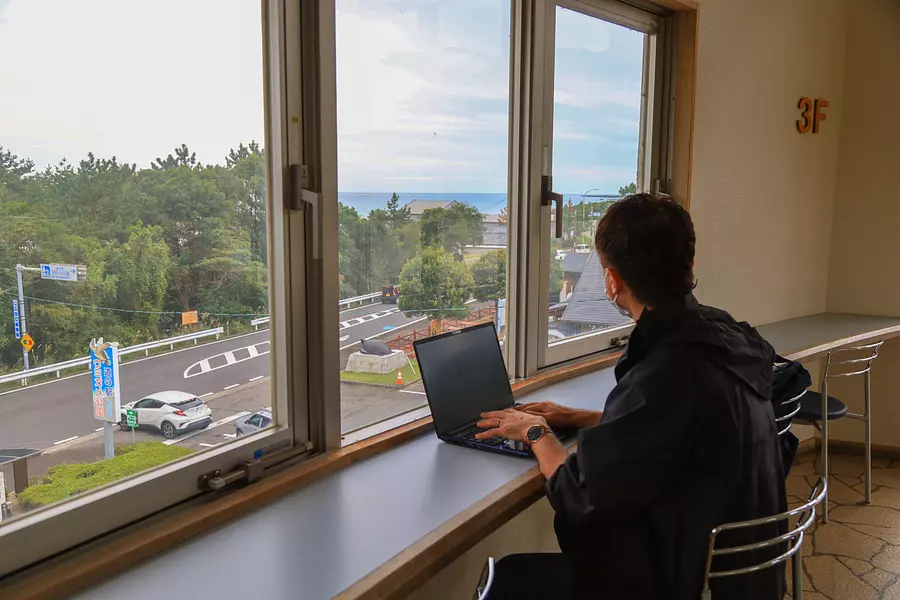
On the observation terrace on the third floor of the facility, you can take a break while looking out at the majestic Shichirimihama coastline, so it's also a good idea to check your email here before heading home.
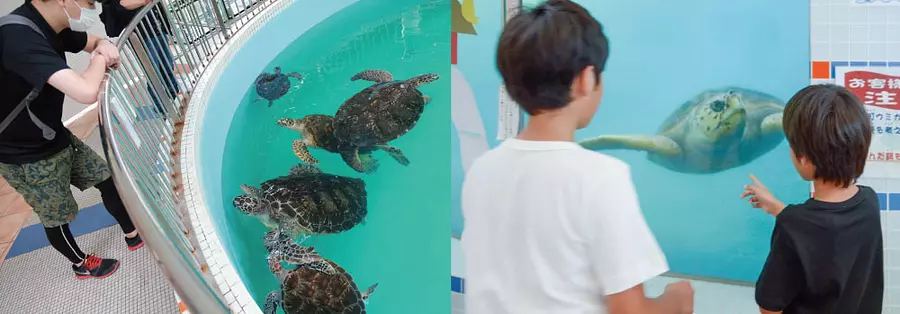
When you get a little tired, let's go to the "Sea Turtle House" inside the facility.
You are sure to be healed by the graceful swimming of sea turtles! You can get very close to sea turtles through the glass♪
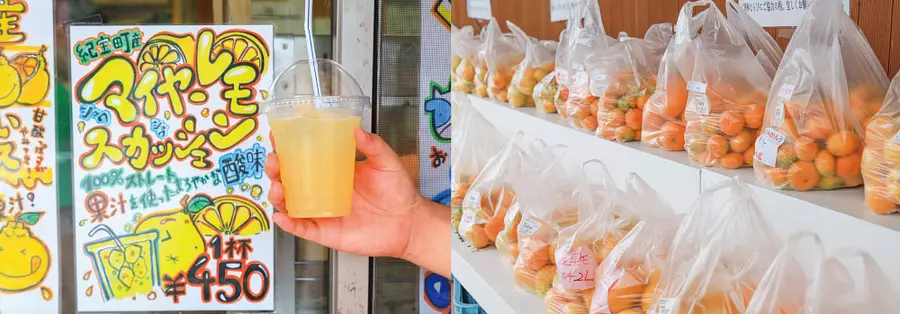
If you're thirsty, how about some Meyer lemon squash?
This citrus fruit, which has a moderately sour taste, is actually a specialty of KihoTown, and is said to have been created through the natural crossbreeding of oranges and lemons.
Of course, there are also many mandarin oranges grown in this area for sale, making them perfect as souvenirs to take home!
Get your memories of your trip and delicious mandarin oranges as souvenirs and have fun talking about them with your family and friends.
What did you think

In this article, we have introduced a plan to enjoy a work stay in Yoshino-Kumano National Park for 2 days and 1 night. The various experiences you have in the rich natural environment and interactions with local people during your breaks from work may give rise to new thoughts and ideas that don't come from everyday life. Please come and experience this area for yourself.
Mie Kanko introduces other model courses for enjoying Yoshino-Kumano National Park. If you are interested, please take a look at the Yoshino-Kumano National Park special website.
Additionally, the special website for Mie Prefecture National Quasi-National Park introduces four national and quasi-national parks within Mie Prefecture. Each area has its own natural charms, so please take a look at them as well.
Click here for my map showing the spots I visited this time ↓
| Category | |
|---|---|
| season | |
| area |


